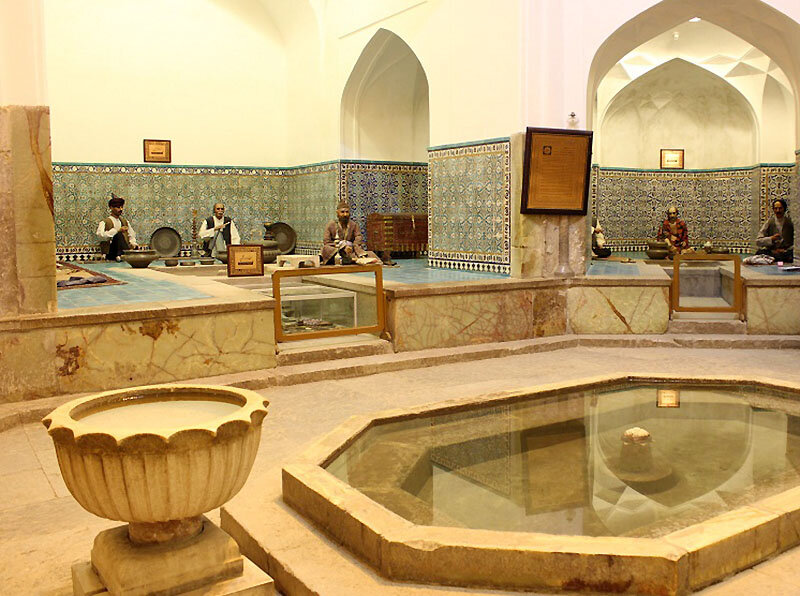Mudbrick complex offers chance of time travel!

TEHRAN – Home to architectural marvels and life-sized wax figures, the Ganjali Khan complex may haunt your imagination for a time travel to the 17th-century Iran.
Located in Kerman, the mudbrick compound embraces a madrasa, mosque, caravanserai, hammam (public bathhouse), cistern, and a maze-like bazaar, centered by a large public square.
Now, it is more than anything else, reminiscent of the glorious past and a typical tourist spot to wander around!
Intricately decorated structures and many wax dolls dressed in native dresses could help visitors better understand the traditions, culture and way of life of the time.
Experts say it is well-designed for avid anthropologists, travelers, or even curious people to catch on with how typical Iranians lived in the Safavid era.
Covering an area of 11,000 square meters, the complex is named after Ganjali Khan, the then-ruler of Kerman in the late 16th and early 17th centuries under Safavid Shah Abbas I (r. 1571-1629).
With an entrance in the northeast corner of the square, the mosque enjoys elaborate tile work and arabesque designs. It features a gold-patterned inner dome and honeycomb windows. The floor is stone and above the wooden door is a rock inscription expressing some admiration for the Safavid king, Shah Abbas. The mosque is decorated with brickworks, stuccos, arabesque patterns, and other artistic elements, among others. In recent years, the mosque has been renovated for tourism purposes as well.
The hammam has been repurposed into an anthropology-like museum in which wax dummies illustrate the workings of a traditional bathhouse. There is also a display case of antique washing utensils. The waxworks clearly illustrate the activities which took place in the old hammam: including a rather chubby chap being cleaned!
Moreover, Ganjali Khan Bath features drawings from the Safavid era which have recently been restored. There is also an inscription on which there is a poem written in Nastaliq.
The bazaar is ornamented with exquisite plasterwork and wall paintings that are well-preserved although they are roughly 400 years old.
Ganjali Khan Bazaar is located between Chaharsough and Ekhtiary Bazaar. It has an area of 535 square meters. At the end of the bazaar is Zargari Bazaar, also known as Gheysarie.
The caravanserai is based on the four-iwan typology, with guest rooms constructed around a courtyard. Shah Abbas I (1571-1629) is credited with building a network of caravanserais across Iran during the much later Safavid dynasty.
Also, there is a mud brick Ab-Anbar or cistern which is named after Ganjali Khan’s son Alimardan Khan. That underground reservoir was part of a qanat system, which relied on snow-fed streams flowing down from surrounding mountains. For thousands of years, qanat systems supplied water to agricultural and permanent settlements in arid regions of Iran, tapping alluvial aquifers at the heads of valleys and conducting the water along underground tunnels by gravity, often over many kilometers.
The big and sprawling Kerman province has been a cultural melting pot since antiquity, blending Persians with subcontinental tribe dwellers. It is home to myriad historical sites and scenic landscapes such as Bazaar-e Sartasari, Jabalieh Dome, Malek Jameh Mosque and Shahdad Desert, to name a few.
AM
Leave a Comment